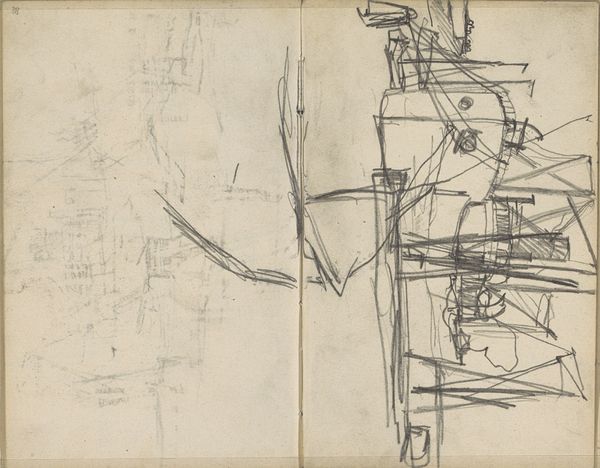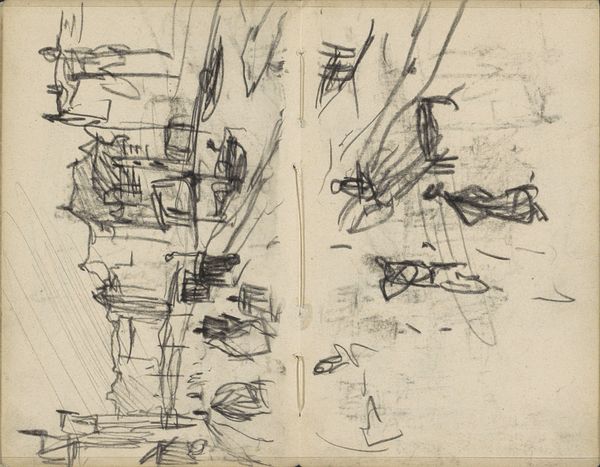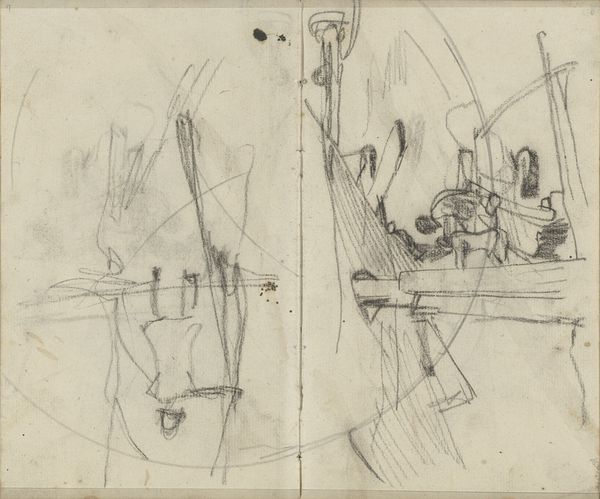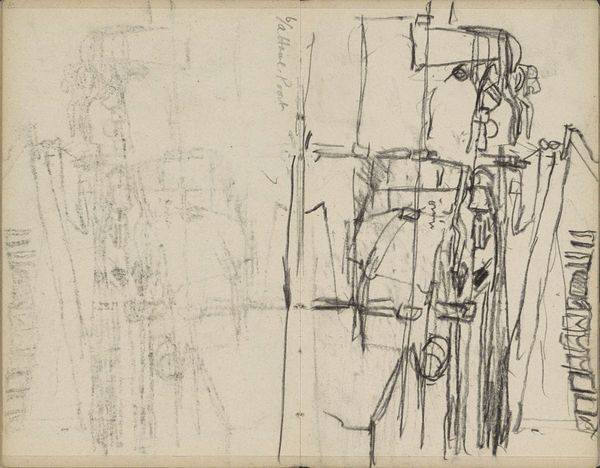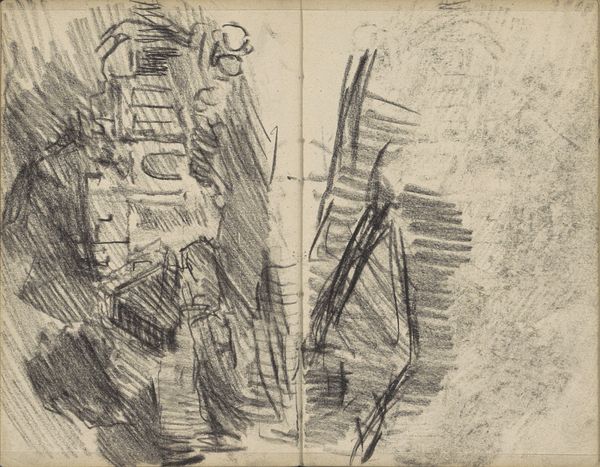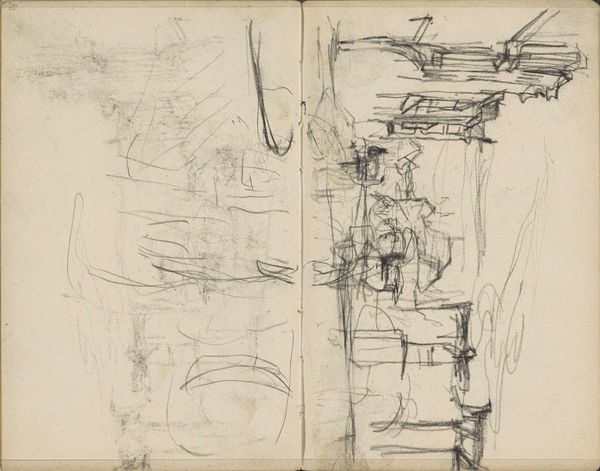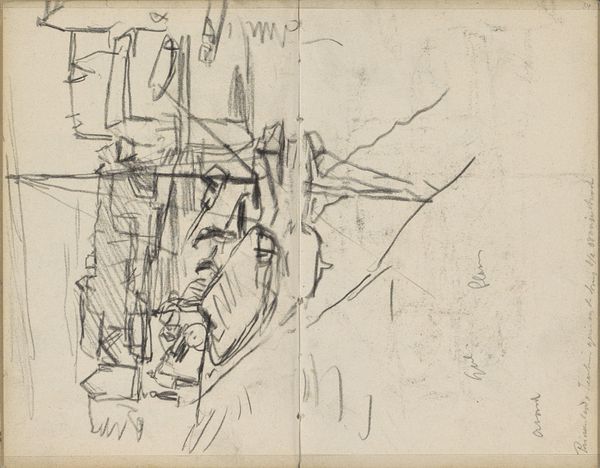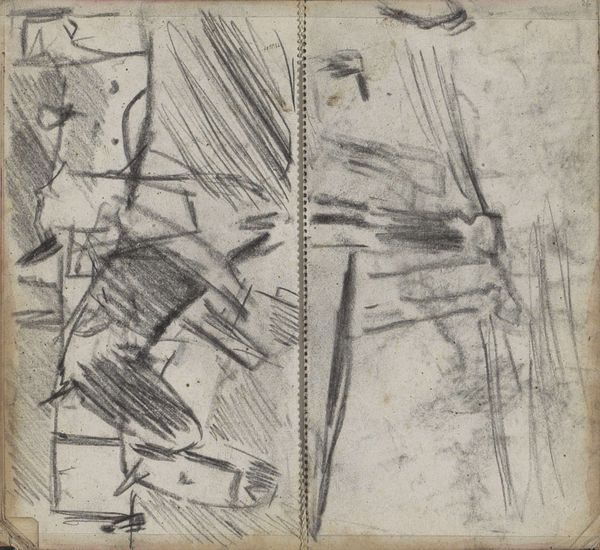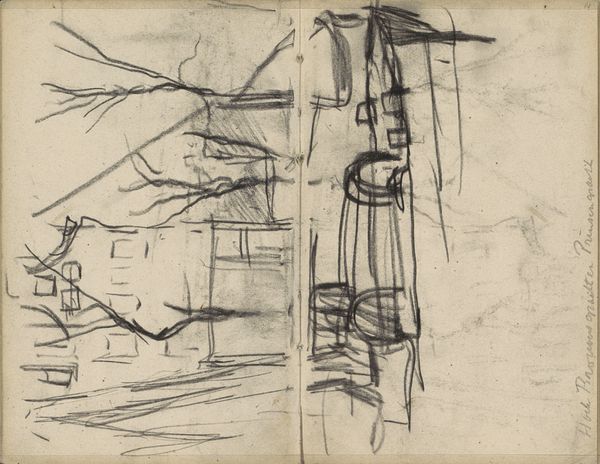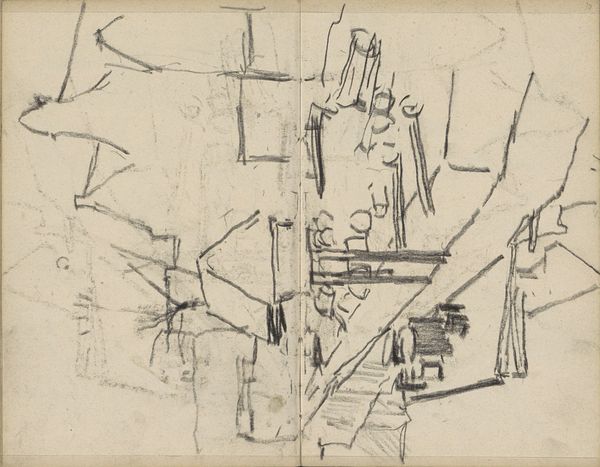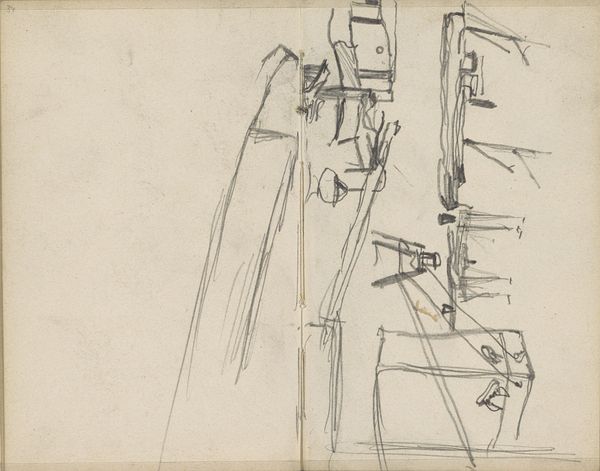
Gezicht op de Overtoom te Amsterdam met schepen c. 1900 - 1901
0:00
0:00
Copyright: Rijks Museum: Open Domain
Curator: Here we have "Gezicht op de Overtoom te Amsterdam met schepen," or "View of the Overtoom in Amsterdam with Ships," a drawing created by George Hendrik Breitner around 1900 or 1901. It’s currently part of the Rijksmuseum's collection. Editor: My first impression is organized chaos! It’s this flurry of lines that almost feel like musical notes scattered across the page. Is it pen and ink? It feels so immediate, so…sketchy. Curator: It appears to be done with pencil, possibly with some pen work to emphasize certain areas. Think of it as a visual shorthand. It seems like he’s trying to capture a scene quickly, almost urgently, rather than aiming for polished realism. Editor: Urgency resonates with me. Looking at it through a contemporary lens, I can’t help but think about the changing cityscape of Amsterdam. The industrial revolution was in full swing—how did this affect the lives of everyday people, the working class who lived and toiled near these waterways? Curator: Absolutely, it is an interesting reflection! Breitner was fascinated by the gritty realities of urban life, far from the romanticized landscapes. You see, in his sketchbooks, we discover a sort of intimacy. It’s not only what is represented but how—the texture, the gestural marks…It’s almost like feeling his presence. Editor: Yes, I do! And I keep coming back to the boats. They weren’t just picturesque elements; they were vital to Amsterdam’s economy. Each vessel signifies connections—economic, social, personal. So, who owned these boats, who worked on them? What goods were they transporting, and how did this impact local economies? Curator: Questions that ripple out into wider currents! Considering that this piece appears as a sketch, I think the composition, divided as it is by the page binding, speaks volumes, as well. I can appreciate its dual perspective on how the city meets the water! Editor: Thinking about the lack of refinement of this and how the composition highlights these socioeconomic realities, it also raises questions about Breitner himself. His position of privilege and class inevitably colors his perceptions, his artistic choices…It demands that we analyze his perspective through the lens of historical power structures. Curator: Well, to move us toward the dock, these 'fleeting' moments provide us with an alternative perspective on urban landscapes! It provides a direct link to an artist and their most inner, initial impressions and decisions about their subjects! Editor: Yes, and the opportunity to ask who gets represented, how, and why, in even the most "casual" artistic gestures.
Comments
No comments
Be the first to comment and join the conversation on the ultimate creative platform.
